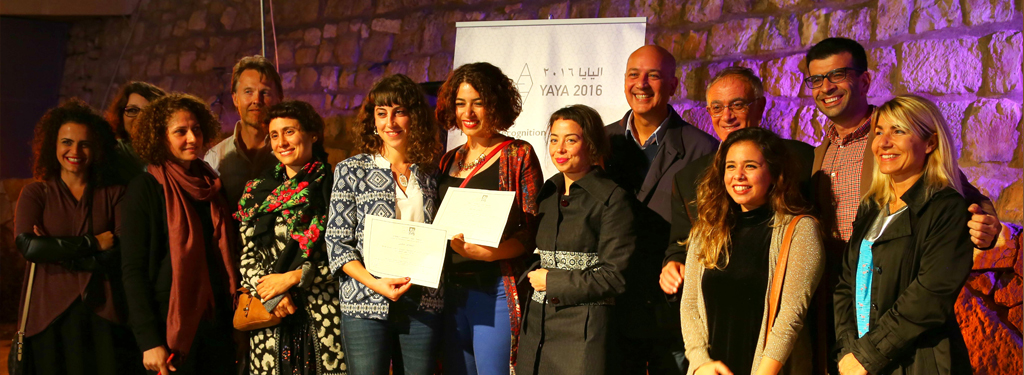Artistic and Cultural Projects
During the reporting period, the first phase of the Culture, Arts and Community Participation project was implemented with funding from the Swiss Agency for Development and Cooperation (SDC). This phase provided a rich experience for the CAP and for various partners. The CAP also launched the Visual Arts: A Flourishing Field (VAFF) project with funding from the Consulate General of Sweden through the Swedish International Development Cooperation Agency (Sida). Aspiring for a more vital and sustainable scene of visual arts in Palestine, the VAFF empowers relevant active institutions to build and develop their capacities, programmes and resources. The project also helps these institutions to upgrade their visions and modes of operation. It collaborates with a broader sector of artists and partners and, by consequence, ensures a broad audience of visual arts.
The CAP has looked for local communities that are involved more in identifying and devising solutions for respective problems through artistic and cultural interventions. To this end, the CAP joined forces with the AMQF Educational Research and Development Programme to implement the first phase of the Culture, Arts and Community Participation project. Covering a renewable period of three years, the project is co-funded by the SDC. In the context of this project, the CAP offered four grants to implement four different projects, which were selected from among 126 projects submitted for the grant. In a longstanding process, the Programme engaged with beneficiaries to develop and launch projects in respective areas. Beneficiaries included Yes Theatre (Hebron) in Dura, south of Hebron; Ashtar Theatre (Ramallah) in the Jordan Valley, Jericho; Dar Qandeel For Arts and Culture (Tulkarem), Tulkarem; and Society of University Graduates (Gaza) in the Gaza Strip.
The VAFF project was launched to add a substantial goal to CAP operations over the upcoming four years: To make the visual art scene more lively and more capable of sustainability. During the project lifespan, the CAP will offer grants to visual art collectives as well as to academic institutions with a focus on visual art education programmes. Grants cover two rounds, each extending for almost two years. It is expected that seven to nine institutions will benefit from the project grants in each round. Grants will cover basic operating expenses, institutional capacity building, administrative and financial regulations, technical resources and programme-related expenditures.

